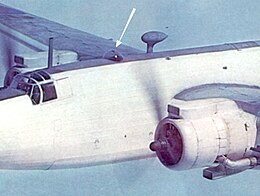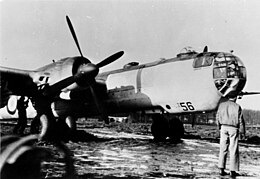

An astrodome is a hemispherical transparent dome that was installed in the cabin roof of an aircraft. Such a dome would allow a trained navigator to perform astronavigation and thereby guide the aircraft at night without the aid of land-based visual references.[1]
Astronavigation was a principal early method for attaining an aircraft's position during nighttime by referencing the stars. The practice of sighting stars using a sextant had been commonplace amongst navigators for hundreds of years aboard ships, and proved to be applicable to faster moving aircraft as well, however, the task required a 360-degree view of the celestial horizon. By installing an astrodome, such a view could be readily achieved. The Royal Air Force (RAF) adopted astronavigation techniques into standard navigator training during the late 1930s, both the methods used and the design of the sextant were adapted to better suit the aviation environment, while many aircraft ordered by the service would be furnished with astrodomes to enable navigators to use this technique.
During the Second World War, astronavigation became a critical ability used to by various nations to conduct long distance flights at night, particularly strategic bombing campaigns. The RAF's choice to mainly operate its bombers at night meant that its crews were particularly dependent on astronavigation for finding their way to and from targets. The introduction of electronic means of navigation soon competed with astronavigation, although electronic techniques had their shortcomings as well.[2]
© MMXXIII Rich X Search. We shall prevail. All rights reserved. Rich X Search
